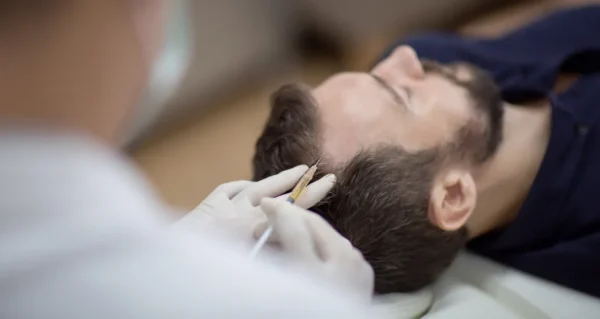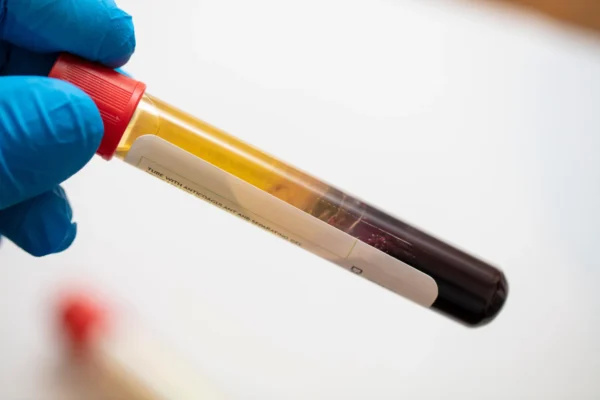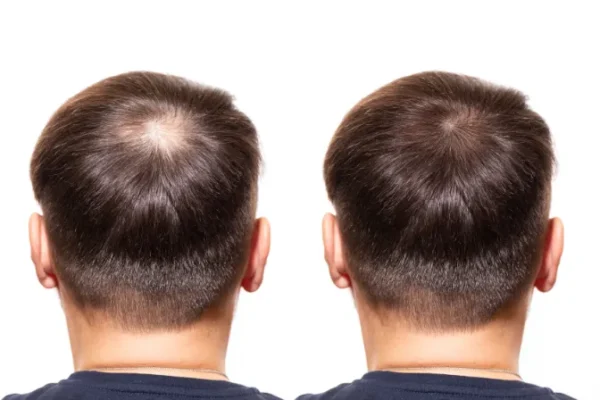Elite Hair Centers
We know that choosing a hair restoration provider is an important decision. At Elite Hair Centers, our unique dermatology and plastic surgery team is dedicated to delivering exceptional results with expertise and passion. This is what sets us apart from the competition.
Platelet Rich Plasma
Platelet-rich plasma (PRP) is a solution of plasma proteins derived from blood. It is created by using a centrifuge to remove red blood cells, leaving a component with a high concentration of platelets, growth factors, and cytokines, which is then injected into the scalp.
PRP therapy offers several benefits, as it is made entirely from your blood, allowing your body to accept the injections without risk of rejection and reducing the risk of infection or side effects associated with other injectable treatments.
The mechanism by which PRP promotes hair growth in individuals with androgenetic alopecia (AGA) is not yet fully understood. However, it is believed that the growth factors and cytokines in PRP, such as platelet-derived growth factor (PDGF), transforming growth factor-beta (TGF-β), insulin-like growth factor (IGF), and vascular endothelial growth factor (VEGF), stimulate hair follicle cells and promote new hair growth. Additionally, PRP may improve blood flow to the scalp by stimulating the formation of new blood vessels, increasing blood flow and providing nutrients and oxygen to hair follicles. In addition to androgenetic alopecia, PRP has been reported to be effective for several other types of hair loss (including telogen effluvium and alopecia areata).
Due to the lack of standardized PRP preparation and application methods, data varies, but several studies suggest its effectiveness. Generally, platelet enrichment should be 3 to 6 times the mean concentration of whole blood (preferably >5x), and the recommended treatment intervals are monthly sessions for the first three months, followed by sessions every 3 to 6 months. Ineffectiveness of PRP for treating AGA may result from low platelet concentration, low PRP volume, inadequate treatment frequency, or patient-specific factors.
One placebo-controlled randomized trial involving 25 patients with AGA found a greater increase in hair density in sites treated with PRP compared to control areas after three PRP treatments separated by one month. Another placebo-controlled randomized study of 26 patients receiving either PRP or saline injections showed a significant increase in hair count, hair density, and the percentage of anagen hairs in the PRP group. A third randomized controlled trial, specifically targeting women with AGA, found that 57% of patients receiving PRP improved at week 24 from baseline compared to 7% receiving saline. A meta-analysis of 10 studies (including several RCT) concluded that PRP therapy resulted in a significantly greater increase in hair density compared to baseline and placebo.
PRP treatment is generally well-tolerated, with mild adverse effects like headache, scalp tightness, swelling, redness, and post-injection bleeding.




summary
- PRP is derived from your blood and injected into the scalp to promote hair growth.
- The exact mechanisms of action are unclear.
- Preparation and injection frequency are crucial but not yet standardized; we achieve a platelet enrichment greater than 6x the concentration of whole blood and recommend the following treatment interval: monthly sessions for the first 3 months, then every 3-6 months thereafter.
- PRP can be effective for men and women with AGA as well as other types of hair loss.
- Best responses are expected in younger patients (20-50s) with mild to moderate AGA.
- PRP can be used as monotherapy but is more effective when combined with other treatments.
- Side effects are typically mild and self-resolving (headache, scalp tightness, swelling, redness, and post injection bleeding).
FAQS
What is PRP hair treatment?
How is PRP hair treatment performed?
How does PRP stimulate hair growth?
Who is a suitable candidate for PRP hair treatment?
How many PRP sessions are needed, and how often?
Is PRP hair treatment painful?
What are the potential side effects of PRP hair treatment?
How soon can I expect to see results from PRP hair treatment?
TESTIMONIALS
REFERENCES
lves R, Grimalt R. Randomized Placebo-Controlled, Double-Blind, Half-Head Study to Assess the Efficacy of Platelet-Rich Plasma on the Treatment of Androgenetic Alopecia. Dermatol Surg. 2016 Apr;42(4):491-7. doi: 10.1097/DSS.0000000000000665. PMID: 27035501.
Rodrigues BL, Montalvão SAL, Cancela RBB, Silva FAR, Urban A, Huber SC, Júnior JLRC, Lana JFSD, Annichinno-Bizzacchi JM. Treatment of male pattern alopecia with platelet-rich plasma: A double-blind controlled study with analysis of platelet number and growth factor levels. J Am Acad Dermatol. 2019 Mar;80(3):694-700. doi: 10.1016/j.jaad.2018.09.033. Epub 2018 Oct 2. PMID: 30287324.
Dubin DP, Lin MJ, Leight HM, Farberg AS, Torbeck RL, Burton WB, Khorasani H. The effect of platelet-rich plasma on female androgenetic alopecia: A randomized controlled trial. J Am Acad Dermatol. 2020 Nov;83(5):1294-1297. doi: 10.1016/j.jaad.2020.06.1021. Epub 2020 Jul 7. PMID: 32649961.
Shapiro J, Ho A, Sukhdeo K, Yin L, Lo Sicco K. Evaluation of platelet-rich plasma as a treatment for androgenetic alopecia: A randomized controlled trial. J Am Acad Dermatol. 2020 Nov;83(5):1298-1303. doi: 10.1016/j.jaad.2020.07.006. Epub 2020 Jul 9. PMID: 32653577.
Gupta AK, Cole J, Deutsch DP, Everts PA, Niedbalski RP, Panchaprateep R, Rinaldi F, Rose PT, Sinclair R, Vogel JE, Welter RJ, Zufelt MD, Puig CJ. Platelet-Rich Plasma as a Treatment for Androgenetic Alopecia. Dermatol Surg. 2019 Oct;45(10):1262-1273. doi: 10.1097/DSS.0000000000001894. PMID: 30882509.

Before & After Gallery
*Individual results may vary.

